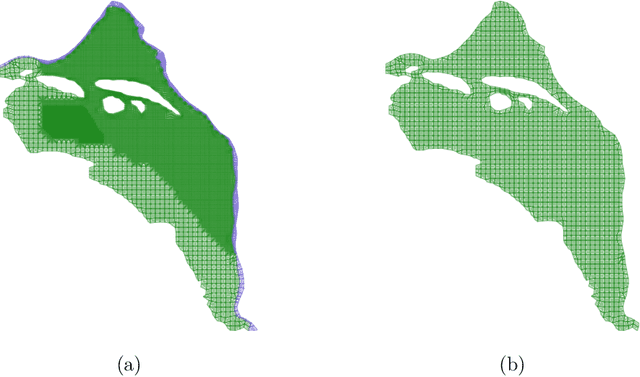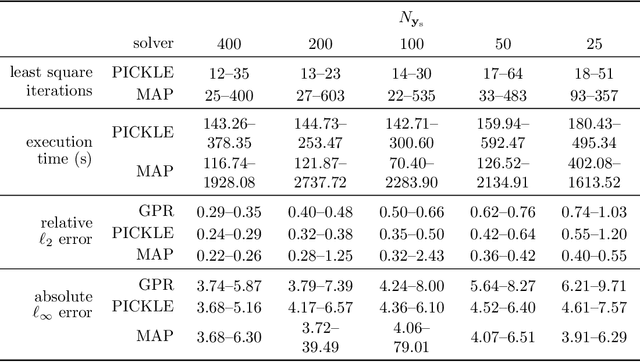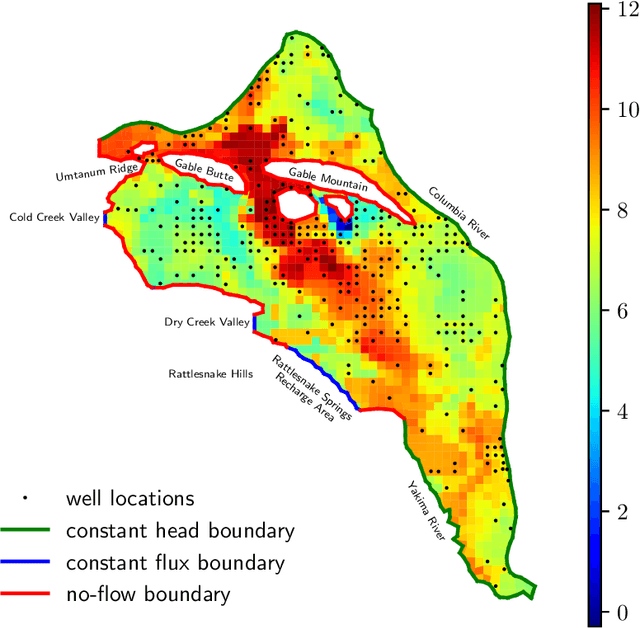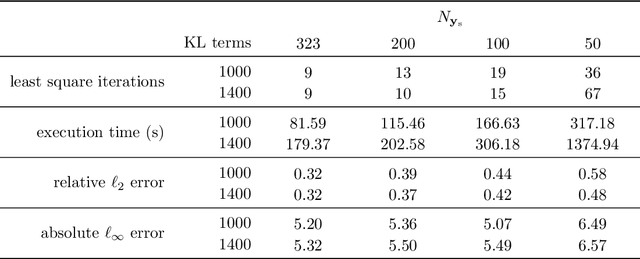Physics-Informed Machine Learning Method for Large-Scale Data Assimilation Problems
Paper and Code
Jul 30, 2021



We develop a physics-informed machine learning approach for large-scale data assimilation and parameter estimation and apply it for estimating transmissivity and hydraulic head in the two-dimensional steady-state subsurface flow model of the Hanford Site given synthetic measurements of said variables. In our approach, we extend the physics-informed conditional Karhunen-Lo\'{e}ve expansion (PICKLE) method for modeling subsurface flow with unknown flux (Neumann) and varying head (Dirichlet) boundary conditions. We demonstrate that the PICKLE method is comparable in accuracy with the standard maximum a posteriori (MAP) method, but is significantly faster than MAP for large-scale problems. Both methods use a mesh to discretize the computational domain. In MAP, the parameters and states are discretized on the mesh; therefore, the size of the MAP parameter estimation problem directly depends on the mesh size. In PICKLE, the mesh is used to evaluate the residuals of the governing equation, while the parameters and states are approximated by the truncated conditional Karhunen-Lo\'{e}ve expansions with the number of parameters controlled by the smoothness of the parameter and state fields, and not by the mesh size. For a considered example, we demonstrate that the computational cost of PICKLE increases near linearly (as $N_{FV}^{1.15}$) with the number of grid points $N_{FV}$, while that of MAP increases much faster as $N_{FV}^{3.28}$. We demonstrated that once trained for one set of Dirichlet boundary conditions (i.e., one river stage), the PICKLE method provides accurate estimates of the hydraulic head for any value of the Dirichlet boundary conditions (i.e., for any river stage).
 Add to Chrome
Add to Chrome Add to Firefox
Add to Firefox Add to Edge
Add to Edge